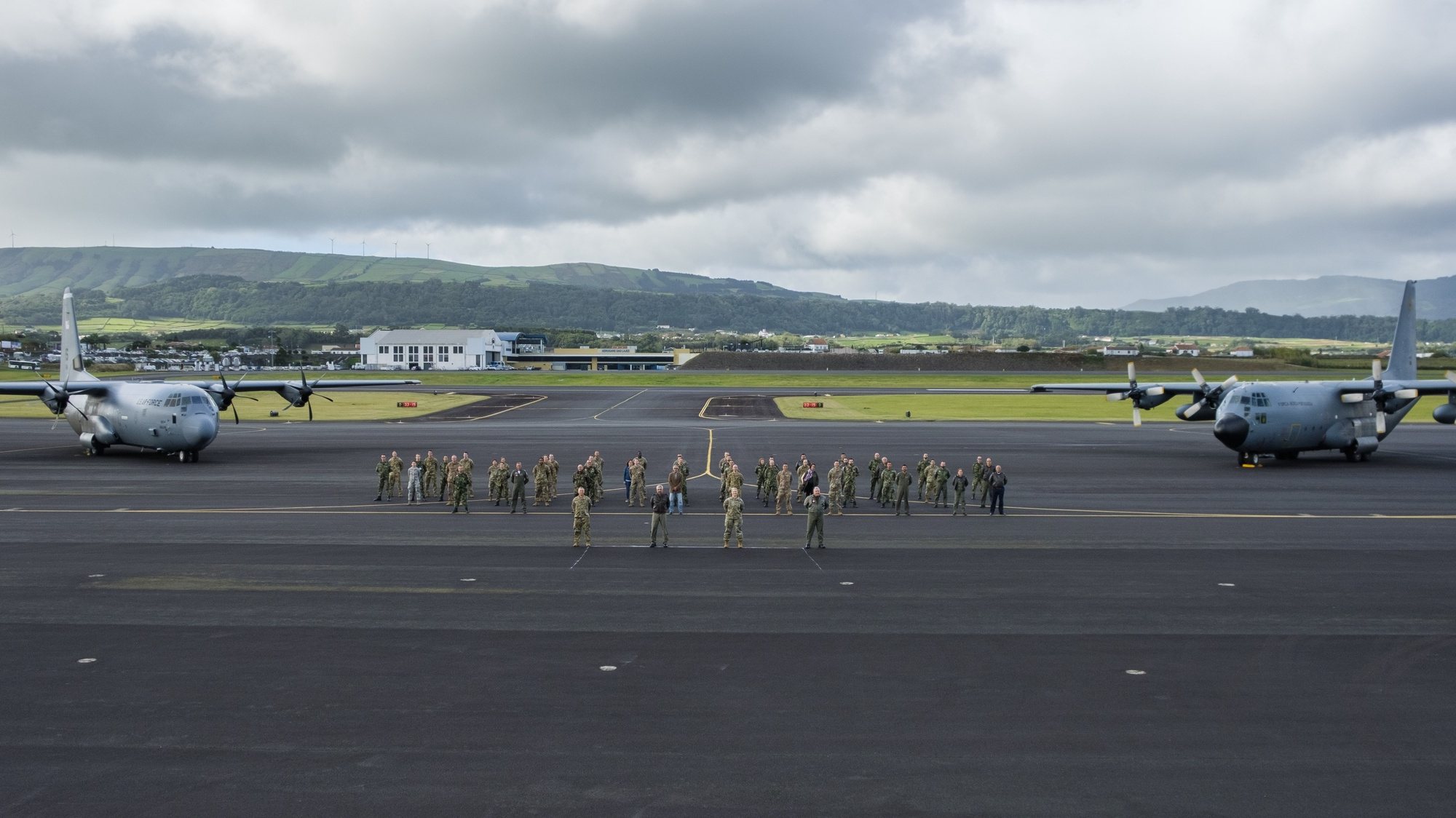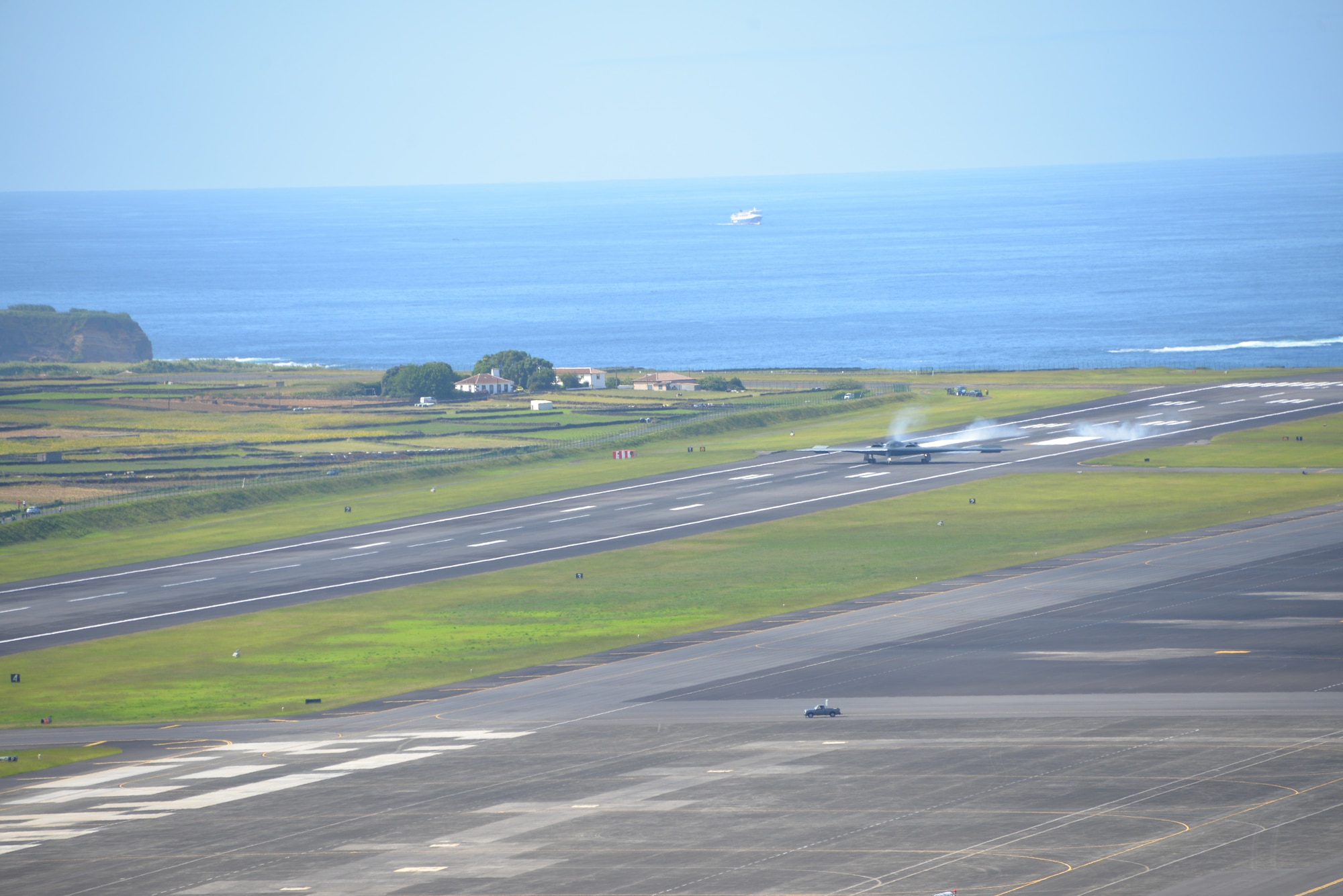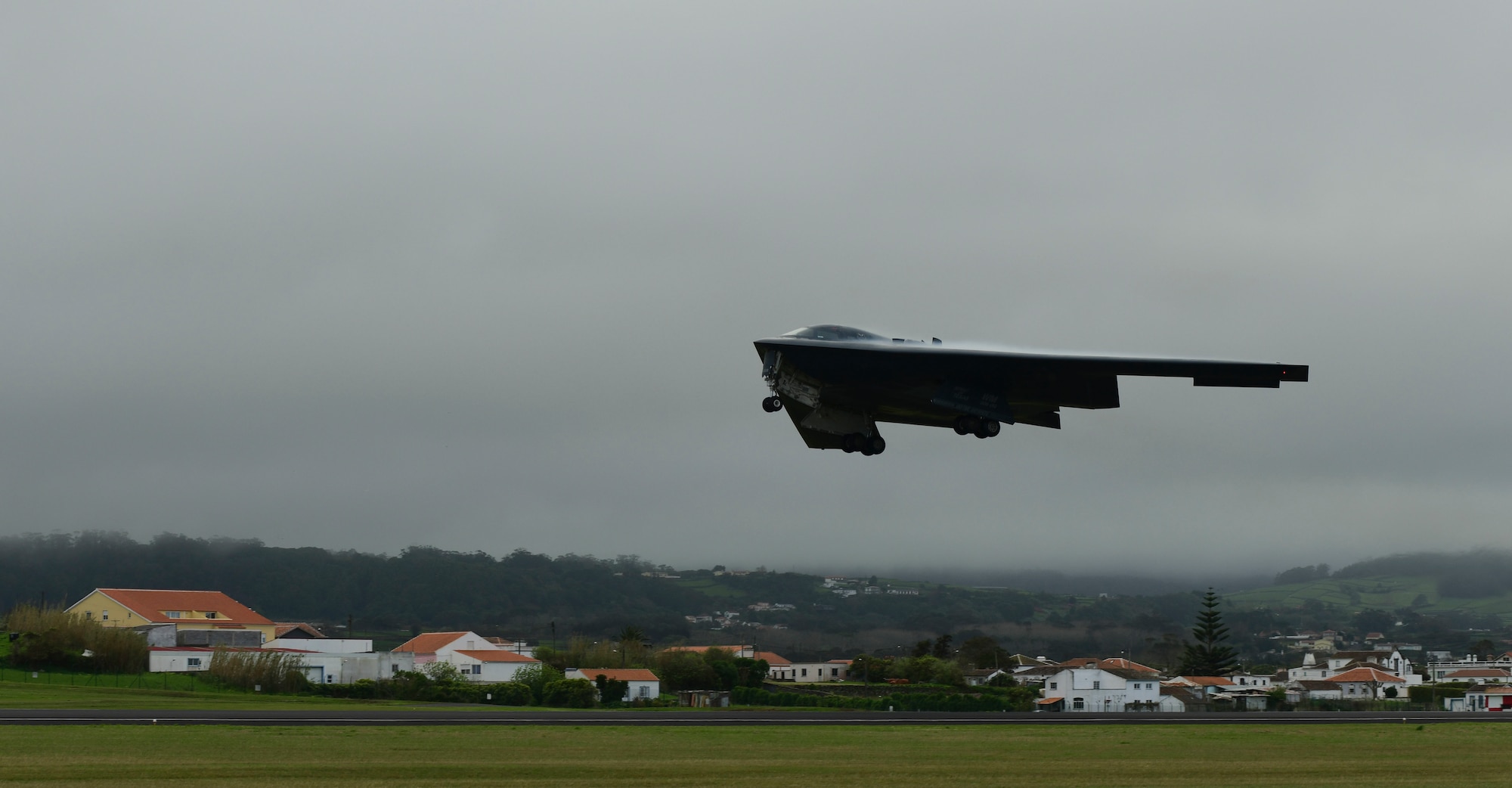Lajes Air Base - For the airport serving Lez, Brazil, see Lez Airport For the civil use of the airfield, see Lages Airport
This article requires additional citation for validation. Please help improve this article by linking to reliable sources. Unauthorized material may be reported and removed. learn how and how to remove)
Lajes Air Base
A variety of United States Air Force aircraft are based at Laje, the airfield is used as a stopover when the aircraft are in the United States and Europe.
B 2s Land At Lajes Field To Join Btf Mission > Air Force > Article Display
38°45'43″N 027°05'27″W / 38.76194°N 27.09083°W / 38.76194; -27.09083 Coordinates: 38°45'43"N 027°05'27"W / 38.76194°С 27.09083°W / 38.76194; -27.09083
Lajes Field or Lajes Air Base (pronounced [ˈlaʒɨʒ]; Portuguese: Base Area das Lajes), officially Air Base No. 4 (Nº 4 Base Area, BA4) (IATA: TER, ICAO: LPLA), is a multipurpose use. Airfield near Lajes and 15 kilometers (9.3 mi) northeast of Angra do Heroismo.
On the island of Terceira in the Azores, Portugal It is the N º4 area of the Portuguese Air Force Base and Azores Air Zone Command (Portuguese: Comando da Zona Aria dos Achores), a unit of the United States Air Force Detachment (United States Air Force Base 65 in Europe managed by the group). - African Air Force) and regional air passenger terminal located 3,680 km (2,290 mi) east of New York City and approximately 1,600 km (990 mi) from Lisbon, Portugal; It is strategically located in the North Atlantic between North America and Europe
The origin of Lajes Field dates back to 1928, when Lieutenant Colonel Eduardo Gómez da Silva of the Portuguese Army wrote a report on the construction of an airfield on Lajes Plain for the Air Service (Portuguese: Aeronautica Militar) of this branch. However, Ajada's location on the island of São Miguel was at the time preferred for the construction of fields. In 1934, the intact airfield was condemned for its insufficient degradation and adverse weather conditions, resulting in the construction of a landing field and a small group support facility on the covered land by the Portuguese military at Laje.
Lajes Airbase Family Touring The Dc 8
See also: Portugal during World War II, Operation Alacriti, and North Atlantic air ferry routes in World War II.
During World War II, the airfield was renamed Air Base No. 4 and the Portuguese government expanded the runway by sending fighters to Terceira, including Gloucester Gladiator fighters. Military activity in the Azores increased in 1942 as Gladiators began to be used in Allied convoys, reconnaissance missions, and meteorology. Also, the first Portuguese Junkers Ju 52 arrived on a cargo mission in July 1942.
By 1943, British and American armed forces were allowed to exercise jurisdiction over Portugal. Within a month of the landings at Terceira in October 1943, the Royal Air Force installed perforated steel plates to register the runway at Lages Field, allowing the Royal Air Force to begin patrolling. The first attack on a German submarine was sunk in November; This attack was followed by several more U-boat attacks until February 1944, when German forces withdrew from British and American patrol areas.

On 1 December 1943, British and American military representatives at RAF Lage Field signed a joint agreement outlining the roles and responsibilities of the United States Air Force (USAAF) and the United States Navy (USN) at RAF Lage Field.
Lajes Field Drawdown As Part Of Force Structuring Announced > Air Force > Article Display
Guidelines and restrictions were established for the transport of aircraft and transport aircraft to Europe via the Lages field.
In return, the United States agreed to help the British improve and expand facilities at Lage. After the signing of the agreement, the transport planes of the Air Transport Command began to land at Lages field. By June 1944, more than 1,900 American aircraft had flown through the Azores base. Flight time on a typical transatlantic route to Brazil and West Africa through Lazes Field has been cut in half from about 70 hours to 40 hours.
Lages Field was one of two stops and a refueling base for the first transatlantic crossing by non-rigid airships (blimps) in 1944. Argtia, Newfoundland and Lajes Field in the Azores before flying to the final destination in Port Luty (Kytra), Morocco.
USN Blimp Squadron 14 (ZP-14 or Blimpron 14) from Fleet Air Wing 15 at Port Louti conducted night anti-submarine warfare (ASW) to locate German submarines around the Strait of Gibraltar. Using Magnetic Anomaly Detection (MAD).
B 2 Spirit Arrives At Lajes Field Afb, Azores
In 1945, two ZP-14 replacement bombers flew from North Carolina to Bermuda and Las Vegas before moving to Crow Field (Kitara Air Force Base) in Port Louis.
In 1946, the United States and Great Britain ceded control of Lajes to Portugal. However, discussions began between the United States and Portugal about increasing the American presence in the Azores. A provisional agreement was reached between the rulers of the United States and Portugal to grant American military rights to Lajes Field for an additional 18 months: relations between the Portuguese and American rulers continue to this day, with the US military remaining in place and Portugal owning the land and infrastructure
Headquarters of the Portuguese Air Force Brigadier General Azores Air Region (equivalent to two-star generals in the United States), Lajes Field remains the Portuguese air base.

In 1947, the Portuguese 41 Squadron began operating from Laz, equipped with Boeing SB-17, Grumman HU-16 Albatross, Douglas C-54 Skymasters, and later Sikorsky H-19 helicopters. In 1952, the United States Air Force activated the 57th Air Rescue Squadron at Las Vegas Field, where it remained until its inactivation in 1972.
Lajes Field Commissary, Portugal
These units were responsible for search and rescue (SAR) operations across the Atlantic in Europe and North America.
In 1949, the North Atlantic Treaty Organization (NATO) military alliance was created. Portugal, USA, Great Britain, Canada and several (other) Western European countries became charter members of NATO. Thanks to the NATO alliance, Laz was available for use by these countries, and Portugal was one of the main contributors to this alliance. However, US military use of Lazes Field is protected by the Status of Forces Agreement (SOFA) outside the NATO SOFA.
In 1953, the US commander in the Atlantic Ocean, Lind D. McCormick organized a joint submarine command in the Azores called US Forces Azores (USFORAZ). Personnel from the United States Army, United States Air Force, and United States Marine Corps formed the USFORAZ Joint Headquarters and served as liaison between the United States and Portugal in the Azores.
In the late 1950s, a USAF aerial refueling/tanker aircraft was stationed in Las Vegas to provide refueling for US aircraft transiting the Atlantic Ocean. Some tanker units left Laz by 1965 but later returned, notably the USAF KC-135 Stratotanker. This shift, along with the introduction of new long-haul flights, has led to a gradual reduction in lagging traffic. The Military Airlift Service (MATS) and its successor, the Military Airlift Command (MAC), were responsible for USAF activities at the base, and for a time the 1605th Military Airlift Support Wing served as the USAF host unit.
B 2 Spirit Aircraft Conduct Hot Pit Refueling At Lajes Field > U.s. Strategic Command > News Article View
Lazy Field also played an important role in Cold War politics. From 1932 to 1968, Portugal was under the dictatorship of Antonio de Oliveira Salazar, but the US government maintained relations with the Estado Novo regime, especially after 1943. Lage Field continued its importance and close association with the Portuguese governorship of Salazar.
In 1961, the EICAP (Heavy Aircraft Improvement Unit) of the Portuguese Air Force moved to Laj, operating the Douglas C-47, Douglas C-54 and later the CASA C-212 Aviocar.
During Portugal's colonial wars, from 1961 to 1975, the Air Force Hospital in Laje served as the main center for the treatment and rehabilitation of disabled and badly burned soldiers of the three services of the Portuguese Armed Forces.
During the 1973 Yom Kippur War, Lazes Field demonstrated the importance of the US Air Force base at Lazes in support of the US Air Force Operation Nickel Grass to Israel.
File:pedro Passos Coelho é Recebido Na Base Aérea Das Lajes.jpg
Another important Cold War operation at Lazes was the United States Navy's operation at Naf Lazes Air Base. NAF Lajes and its associated Tactical Support Cter (TSC)/Submarine Warfare Operations Cter (ASWOC) use US Navy P-2 Neptune and later P-3 Orion maritime patrol aircraft to attack, guide and track Soviet missiles. Ballistic Missile Submarines in the Area With the collapse of the Soviet Union and the Warsaw Pact and the Cold War, P-3 operations in Las Vegas dwindled, and the Navy's air base was decommissioned in the late 1990s.
Watch out for the Portuguese
Otis air force base, air base, lajes air force base, chanute air force base, lajes air field, lajes field base housing, air transat lajes, air force base apartments, selfridge air force base, lajes field air base, stewart air force base, air force base hotel


0 Comments